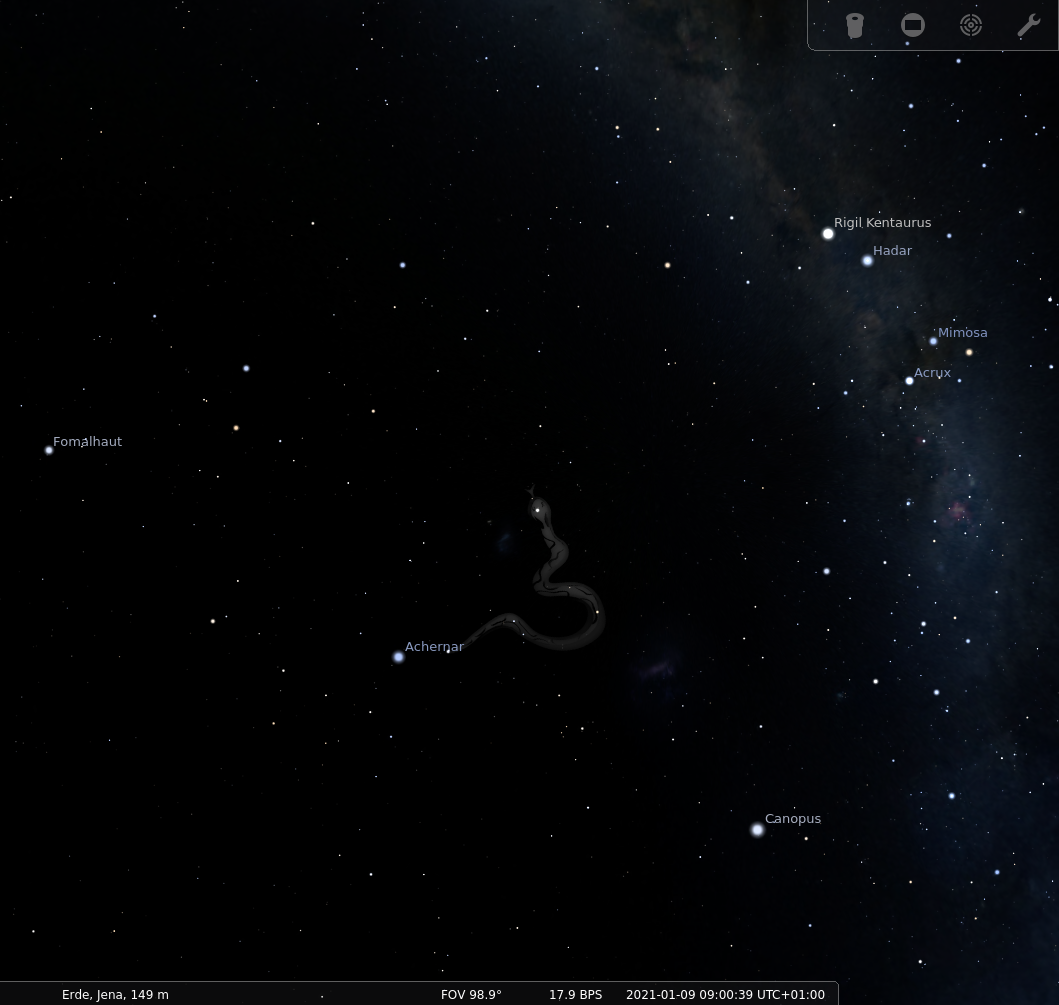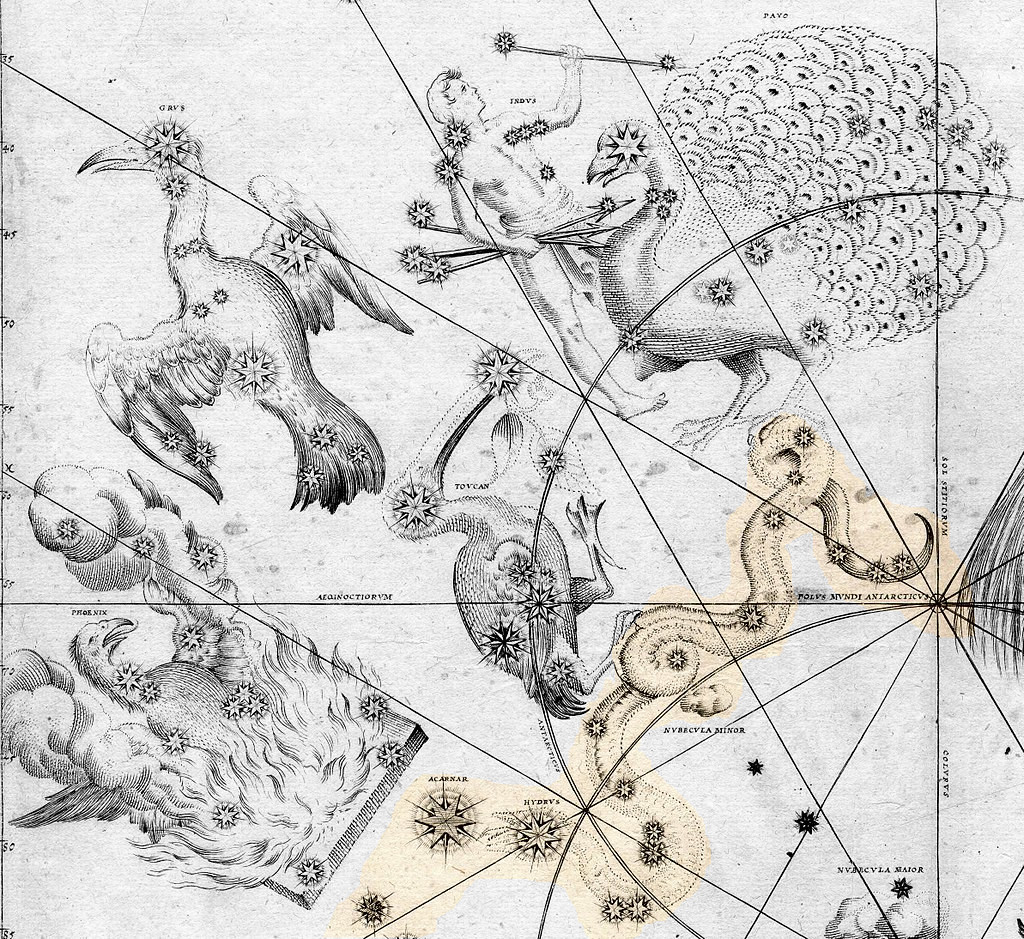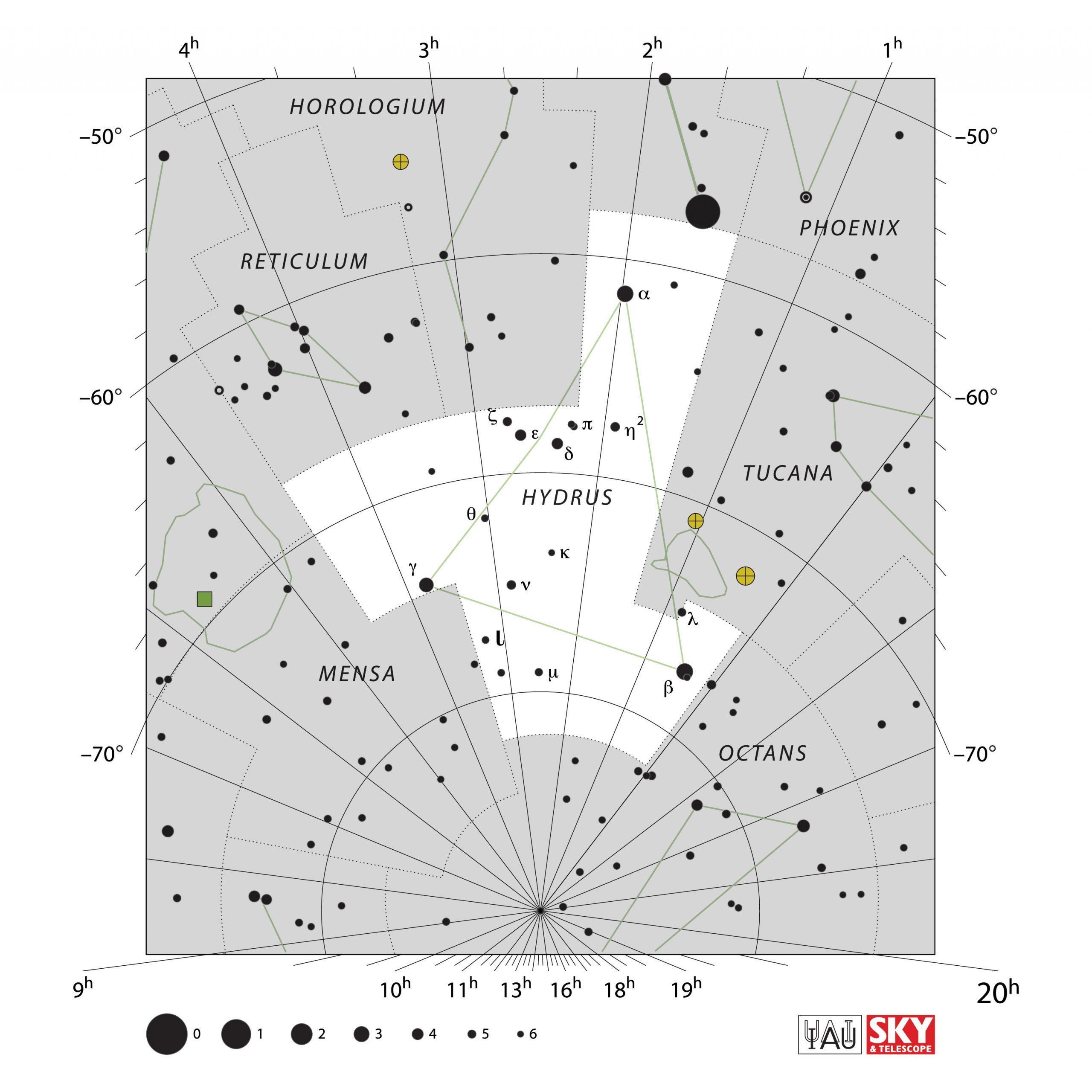Profile / Characteristics
| English translation | Latin declination and pronunciations | Size/ °² | # stars (visible) |
| the Lesser Water Snake | Hydrus – HIGH-drus Hydri – HIGH-dry | 243 | 34 |
Main Star (brightest one):
| Designation | HIP number | name in IAU-CSN | brightness |
| α Hyi | HIP 9236 | – | 2.84 mag (V) |
Our (modern) Explanation
Hydrus was invented in the early 1600s with a prehistory in the 1590s. When Dutch navigators first extended the ancient constellation of the River (now: Eri) further south and used its curley line for star hopping to the south pole (as depicted in Bayer’s Uranometria 1603), but later noticed that Ptolemy states the brightest star is at the end of the River. As the extended River-constellation ended at Achernar, the rest of the curley line to the south pole needed another name: Hydrus. It was originally translated “Lesser Water Snake” in Dutch but later coined “Male Watersnake” by Lacaille in the 1750s. Lacaille, placing a contemporary invention for navigators, the octant, at the south pole cut off the tail tip of the original Hydrus definition.
Ancient Globes



Farnese Globe
Kugel Globe
Mainz Globe
–
–
–
Ancient Lore & Meaning
Aratus
–
Reference:
English translation by Douglas Kidd (1997).
Aratus: Phaenomena, Cambridge Classical Texts and Commentaries, Series Number 34
Pseudo-Eratosthenes
–
References:
French translation by:
Jordi Pàmias i Massana and Arnaud Zucker (2013). Ératosthènes de Cyrène – Catastérismes, Les Belles Lettres, Paris
English version in:
Robin Hard (2015): Eratosthenes and Hyginus Constellation Myths with Aratus’s Phaenomena, Oxford World’s Classics
Modern and Mediaeval Depiction

Depiction in Stellarium (by Fabien Chéreau, since 2000 CE)
depiction in the Leiden Aratea (9th century CE)
Early Modern Interpretation

For modern versions of ancient lore:
Ian Ridpath’s page on this constellation
Commentary
Hydrus is a chain of stars that continues the chain of Eridanus and in the earliest preserved depiction, Uranometria 1603, Hydrus is pointing towards the celestial south pole. This was later changed by Lacaille but it suggests that the constellation originally was invented as a navigation tool.
Contemporary
As one of their first tasks in the 1920s, the newly founded International Astronomical Union (IAU) established constellation standards. The Belgian astronomer Eugène Delporte was assigned to the task to define borders of constellations parallel to lines of declination and right ascension. They were accepted by the General Assembly in 1928. The standardized names and abbreviations had already been accepted in 1922 and 1925.

